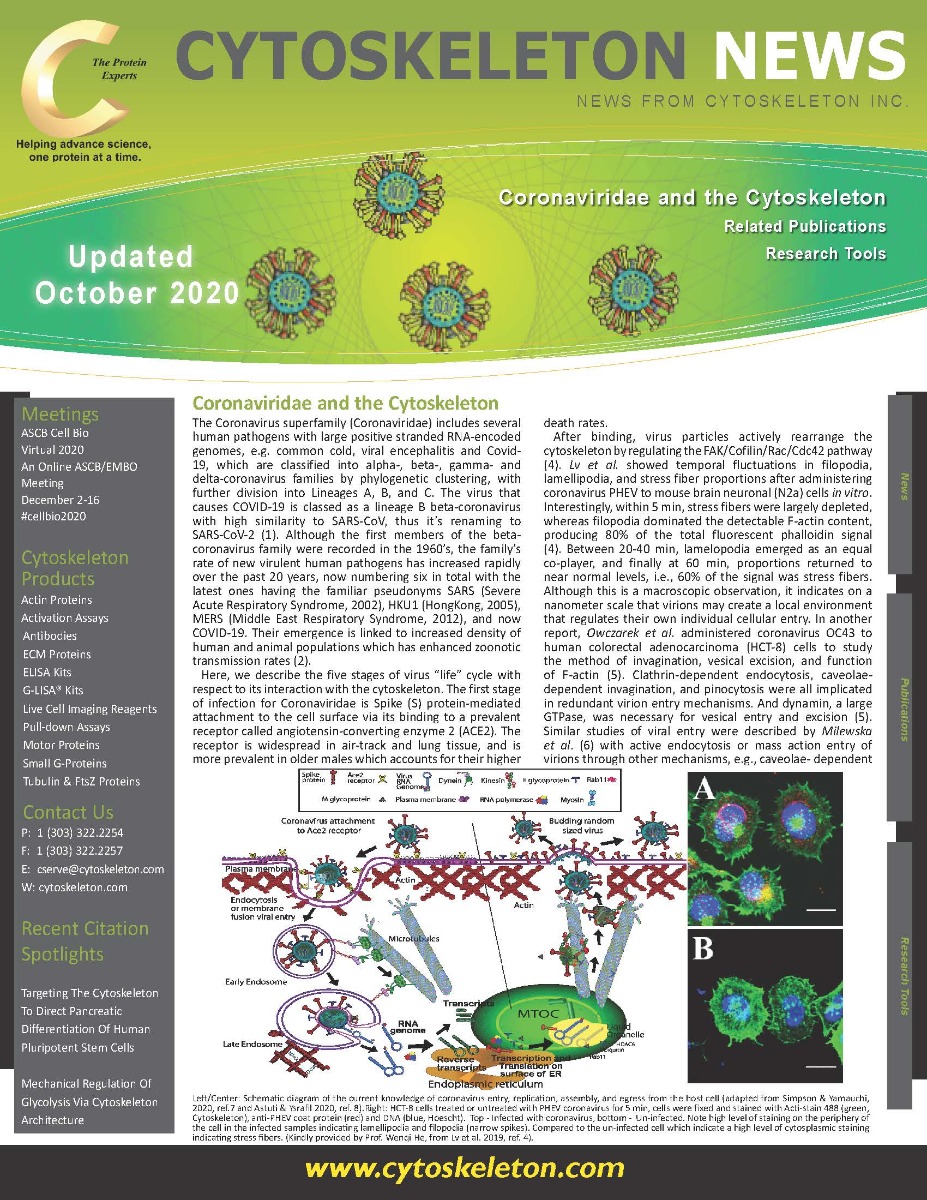Newsletter Update: Coronavirus and the Cytoskeleton
-
 By
Cytoskeleton Inc.
By
Cytoskeleton Inc.
- Oct 28, 2020

 |
The Coronavirus superfamily (Coronaviridae) includes several human pathogens with large positive stranded RNA-encoded genomes, e.g. common cold, viral encephalitis and Covid-19, which are classified into alpha-, beta-, gamma- and delta-coronavirus families by phylogenetic clustering, with further division into Lineages A, B, and C. The virus that causes COVID-19 is classed as a lineage B beta-coronavirus with high similarity to SARS-CoV, thus it's renaming to SARS-CoV-2 (1). Although the first members of the beta-coronavirus family were recorded in the 1960’s, the family’s rate of new virulent human pathogens has increased rapidly over the past 20 years, now numbering six in total with the latest ones having the familiar pseudonyms SARS (Severe Acute Respiratory Syndrome, 2002), HKU1 (HongKong, 2005), MERS (Middle East Respiratory Syndrome, 2012), and now COVID-19. Their emergence is linked to increased density of human and animal populations which has enhanced zoonotic transmission rates (2).
Here, we describe the five stages of virus “life” cycle with respect to its interaction with the cytoskeleton.
Also included in this newsletter:
- Tubulin and Actin Live Cell Reagents, G-LISA Activation Assay Kits, Tubulin Kits, Actin Biochem Kits
- Related Publications
